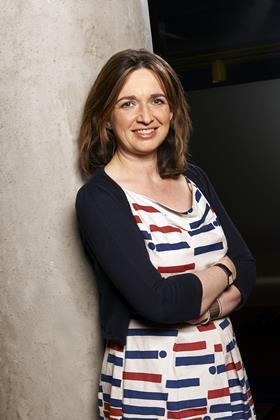In the era of multiplatform, time-shifted and on-demand viewing, working out who has watched what is no easy task.
How do we find out if linear TV really is dying? How do we see if the future is all about over the top (OTT) content and on-demand? Further still, how do we find out who is watching, where, and on what device?
Audience measurement is the key; with the data that audience measurement can provide, broadcasters and content providers can have insight into their businesses and the strategic direction they need to take next.
Channel 4 Director of Consumer Insight Sarah Rose is responsible for the broadcaster’s award-winning data strategy and transforming the way viewer data and insight is used to inspire new ideas and maximise Channel 4’s competitive edge as in the UK.

IBC365 Why is audience measurement so vital?
Sarah Rose Audience measurement is absolutely critical to the entire TV ecosystem.
Without understanding our viewers’ behaviour properly we would not be able to tailor content strategies, programmes and products for them.
And, in the free-to-air world, without knowing how many people watched a particular show or service we would not be able to generate revenue effectively. Having no measurement would be like turning the lights off.
How do broadcasters such as Channel 4 currently measure who is watching their programmes? Is it possible to accurately measure total audience?
Like most of the UK market, we rely on Broadcasters Audience Research Board (BARB) to measure our viewing, and indeed we part-fund it with our fellow broadcasters.
BARB represents the gold standard of viewing measurement and is admired around the world for its quality.
It relies on a nationally representative panel of over 5,000 homes (equating to over 12,000 people,) and uses clever weighting and modelling to produce a very reliable view of UK TV audiences, which forms the basis of our TV ad market trading as well as informing channel and programming strategies.
How does C4 differ in its measurement approaches and methods from other broadcasters?
As well as our BARB measurement, we supplement our audience insight by tracking the viewing behaviour of our 15 million registered users on our All 4 VOD service (including over half of all 16 to 34s in the country).
This more granular data collection is an important complement to the market-wide measurement which all broadcasters subscribe to, and enables us to tailor our content recommendations and promotions as well as to target our advertising within All4.
This is not unique to us; all broadcasters with a VOD service and registered users will have similar insight, but we are very proud of our market-leading data science team who are putting these billions of data points to good use within our consumer offering and enabling us to deliver a more personalised service.
What are the problems in measuring audiences spread across multiple platforms, time shifted viewing, PVR and the like? Are all platforms of equal importance?
The great challenge the whole industry faces is how best to measure consumption by all audiences across all devices fairly and consistently.
BARB already measures time-shifted viewing and is currently developing Project Dovetail, which will allow their existing panel to be fused with data collected from individual devices. This means for the first time the industry will be able to track viewing by the same viewer across multiple screens, so it represents a big step forward.
Depending on the business model on which they operate, channels and services may value individual platforms differently.
But most importantly content providers have to recognise the evolution of consumer behaviour and the growing fragmentation of their viewing patterns.
We want to provide content to meet their needs on the platforms of their choosing, and we then want to measure their viewing in a transparent and high quality way, which is easy to say but highly complex to achieve!

For how long after transmission do broadcasters continue to measure audiences?
BARB currently measures up to 28 days after the first transmission of a programme. On our on demand service, All 4, we measure the audience to a show whenever they chose to watch it, irrespective of the original transmission date, although the majority of viewing is still within the ‘catch-up’ window, ie seven days after TX.
Finally, is there a role for social media in assessing and measuring audiences?
Absolutely. Social media is an ideal barometer for people’s tastes and interests. We have to be aware of the ‘vocal minority’ but we are increasingly measuring our audience engagement by a variety of means, and social media is a key tool for us.
IBC2017 Sarah Rose will speak as part of the Mythbusting: What’s Really Happening to TV Audiences? discussion in the Forum on 16 September
























No comments yet